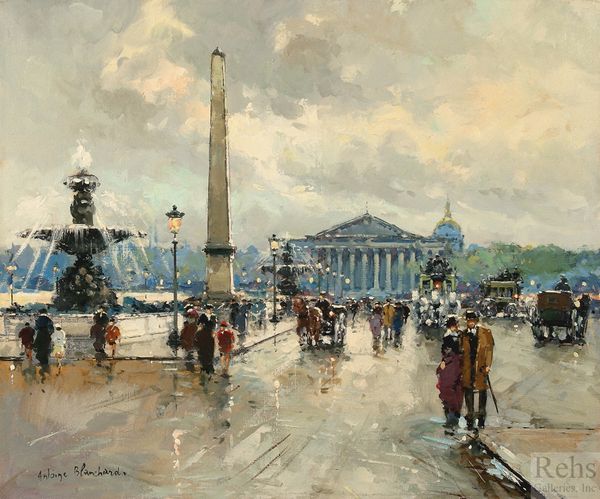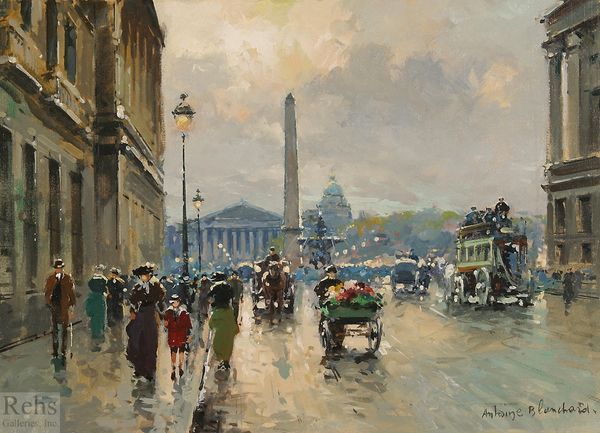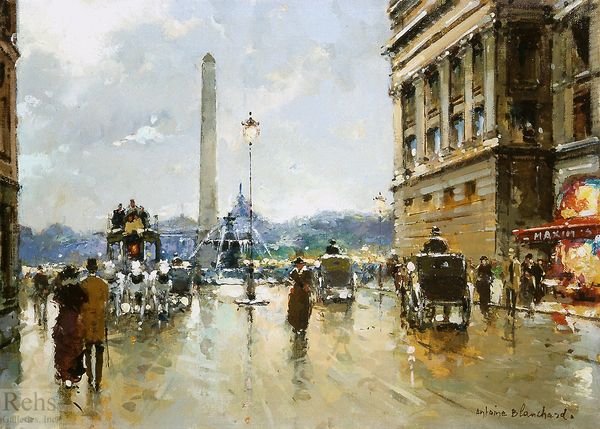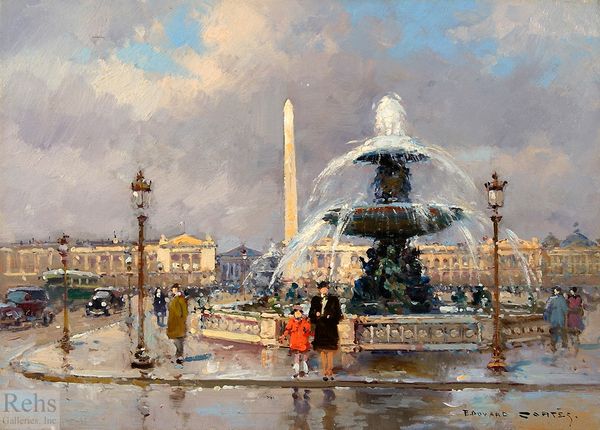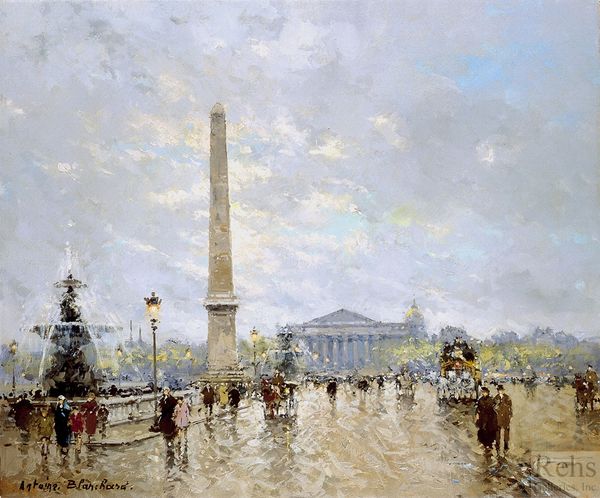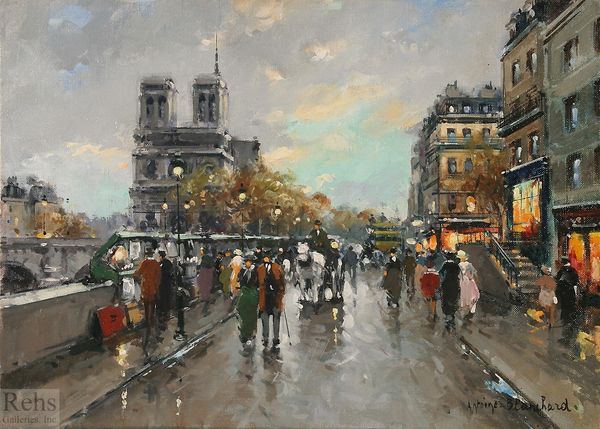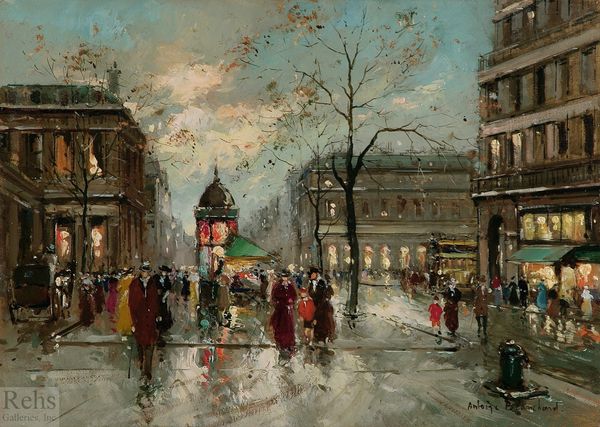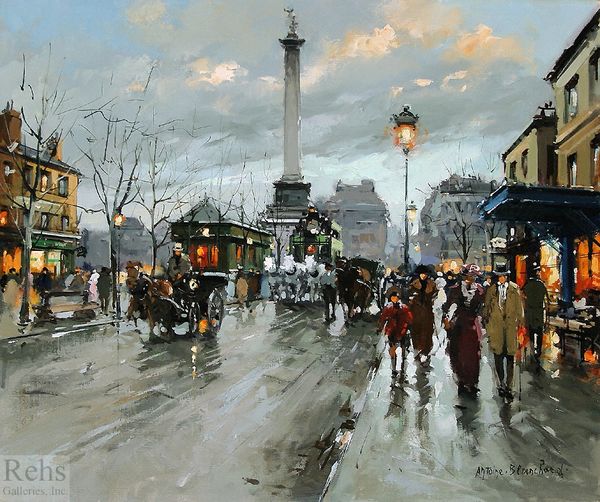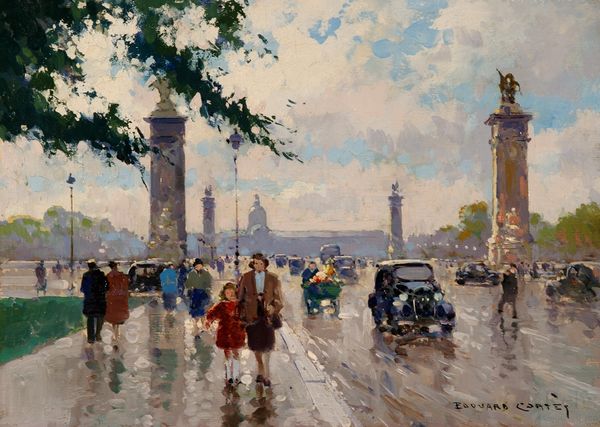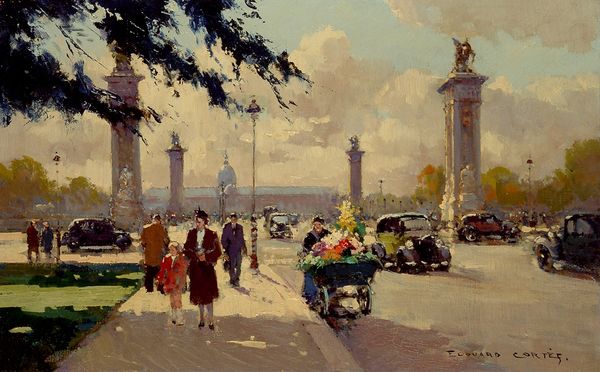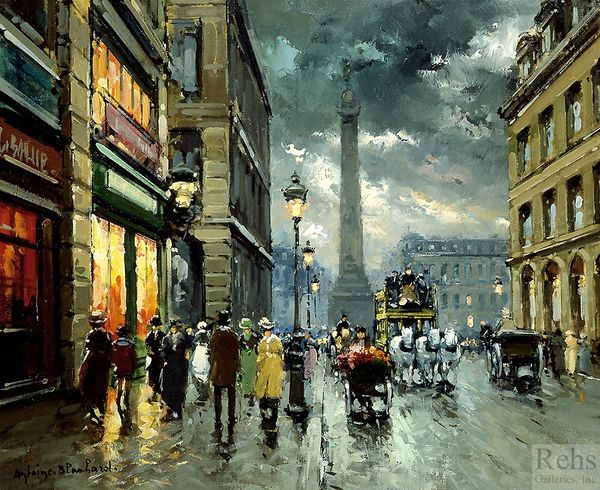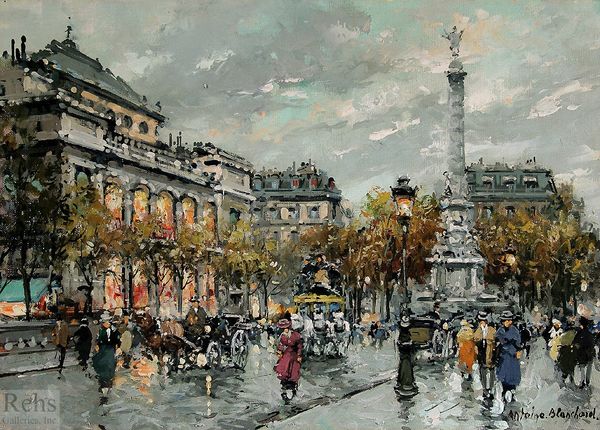
oil-paint
#
urban landscape
#
impressionism
#
street view
#
oil-paint
#
vehicle
#
house
#
oil painting
#
square
#
cityscape
#
genre-painting
#
street
#
building
Copyright: Antoine Blanchard,Fair Use
Curator: Here we have Antoine Blanchard's "Place de la Concorde," an oil painting rendering a classic Parisian scene. Editor: It feels melancholy. The muted palette and hazy atmosphere create a wistful sense of transient city life. It really pulls you in with a grounded street-level point of view. Curator: Blanchard made numerous paintings of Paris's streets, capturing them during various times of the year and various weather. His work invites questions of accessibility to fine art, as he deliberately creates works of commercial value, meant to be purchased. This contrasts to academic "high art" often favored by critics. Editor: The historical context is interesting here too. Place de la Concorde has a very complicated and violent past tied to public executions. The gleam and rush feel strange because I also feel that history embedded within the site of this painting. Do you think Blanchard was aware of how these dynamics shift class experience and also history itself? Curator: It’s tough to say for certain what Blanchard's intentions were, but one thing we know is that he favored painting after the golden age of Impressionism. He had to produce these works at speed as urban genre scenes were quite popular. What does that say about Blanchard as a material being in his time period? Editor: That is something that this scene doesn't reveal easily. But the way he captures figures with rapid strokes creates an impression of movement and transience, mirroring the socio-political dynamics and shifting social structures present in the space during this time. This work certainly brings that awareness to light. Curator: Precisely. Through Blanchard’s choices around materials and approach to urban painting, he's documenting and partaking in popular image economies. He really knew how to create what the market needed. Editor: This artwork invites the audience to think about the various relationships in urbanity – commerce, the city itself, class, labor, visibility and who or what is captured within paintings and society. Thanks for expanding on all of that for me. Curator: Absolutely. It’s important to think about the materiality of the city too – oil paint on canvas depicting material commerce as well as historical and socioeconomic forces and values in real life. Hopefully it gets everyone else to also contemplate that too.
Comments
No comments
Be the first to comment and join the conversation on the ultimate creative platform.
